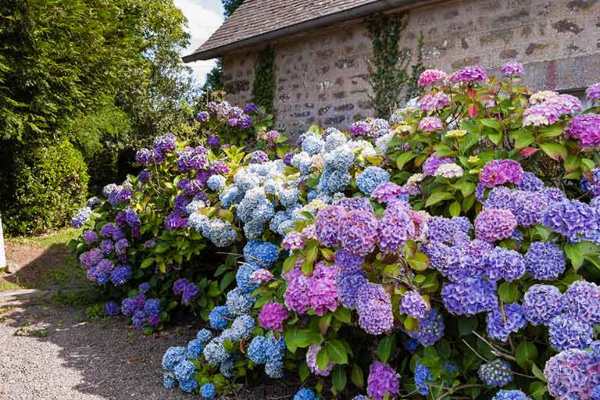Hydrangeas are beautiful shrubs that have a wide range of varieties that make a home or garden look beautiful. They can be a little tricky to grow for a beginner because some of them are sensitive to poor soil drainage, incorrect soil pH, under or overwater, and over-fertilizing. So, it is necessary to know how to begin to correctly care for these beautiful plants. We bring you these 13 beginner-friendly hydrangea varieties which will reward you with stunning blooms and low maintenance needs so that you can choose the best fit for your garden.
1. Oakleaves Varieties
Oakleaves hydrangeas also known as Hydrangea quercifolia are one of the easiest varieties to grow. Its common name refers to the large oak-shaped foliage that makes them different from other varieties. This North American native shrub can grow up to 4 to 8 feet tall and wide. These beauties are drought tolerant and they love well-draining soil.
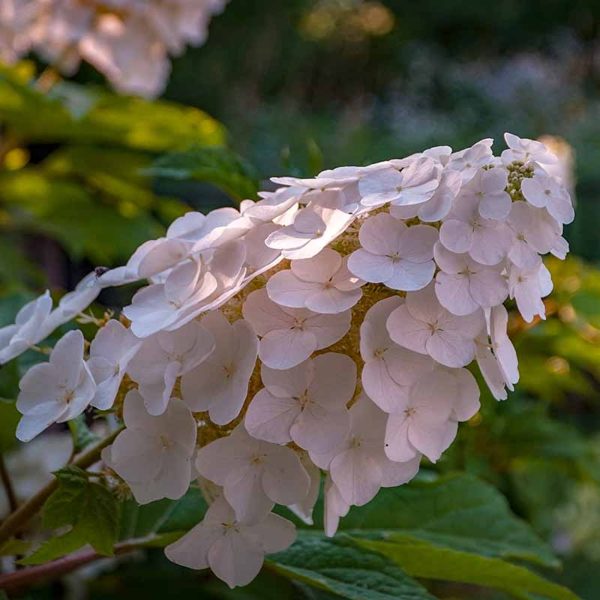
When it comes to pruning, these varieties need very little pruning. They grow on old wood so it’s better to keep branches from the last growing season in place to get enough blooms. It’s only better to prune to remove dead or damaged branches. Summer can be the perfect time to prune them after it is done flowering for the season. Most of the varieties of Oakleaves are white but some bloom pink as well.
2. Alice
Alice is often called the most robust and trouble-free hydrangea, making it a perfect choice for beginners. This deciduous shrub can grow up to 8 feet tall and wide if the owner leaves it unchecked. One good thing is that this variety can tolerate full to partial sun conditions and produces white blooms that eventually fade to pink.
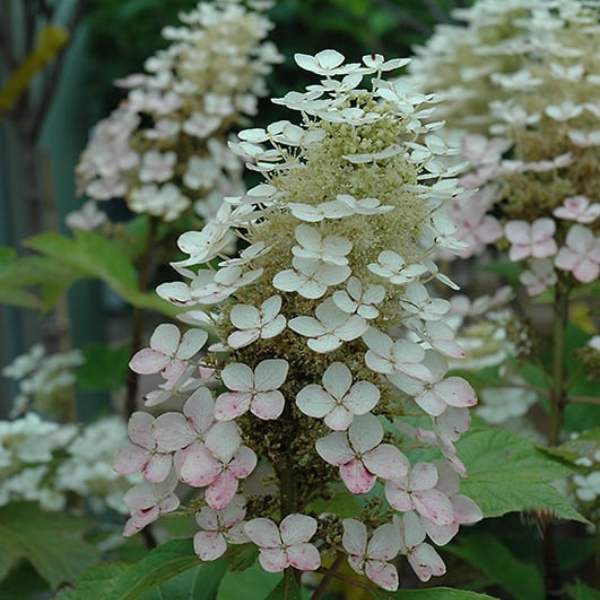
Alice starts to bloom in June and can last through the end of July. It is also not that picky about the soil pH but once the blooms have faded, it will turn into a beautiful red-bronze foliage in the fall until the leaves shed for the winter.
3. Snowflake
For those who love blooms, this variety has the longest bloom time of the oakleaves hydrangeas. It will bloom from June into late summer. Its double bloom gives it a rare appearance.
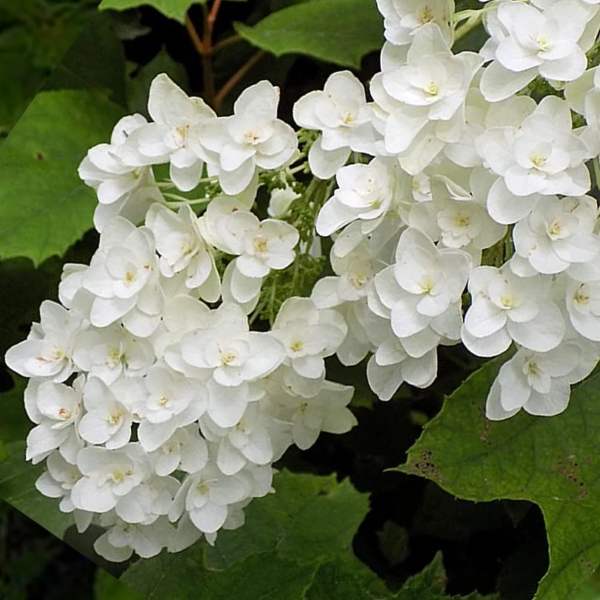
They prefer partial shade but can also adapt to full sun conditions if kept well watered. They are fast growing and can mature to the size of 8 feet tall and a foot wide. The white flowers fade to pink and as they die back, the green foliage turns into a pretty maroon color in the fall.
4. Ruby Slippers
This plant is for those who are tight on space. Ruby Slippers grow to a mature size of four feet tall and wide. It can fit even in the smallest garden. This stunning variety can grow well in full size to partial shade conditions and produces white flowers that quickly turn into a deep pink rosy hue.
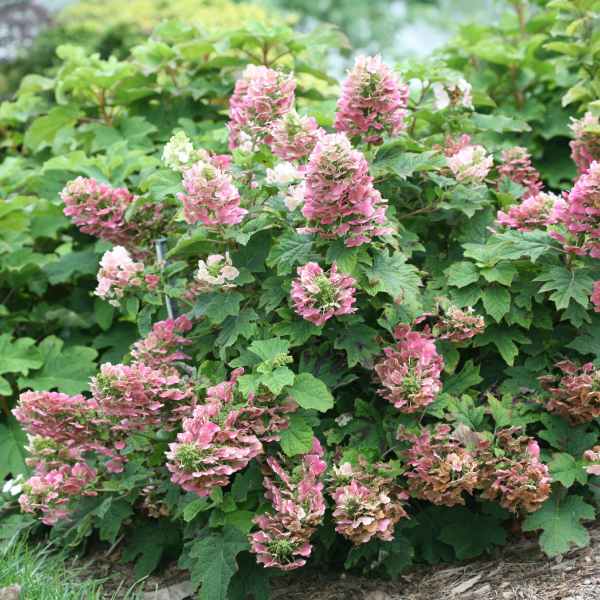
This variety thrives in heat, drought, and poor soil conditions, making it one of the easiest to care for garden plants. So, if you’re someone who wants to have the perfect garden plant that doesn’t require much attention, it might be the one for you.
5. Tara
The Tara oakleaf variety is a bit different from other ones since it produces tightly spaced florets of blooms, giving it a mophead appearance without the high maintenance required for most mophead varieties.
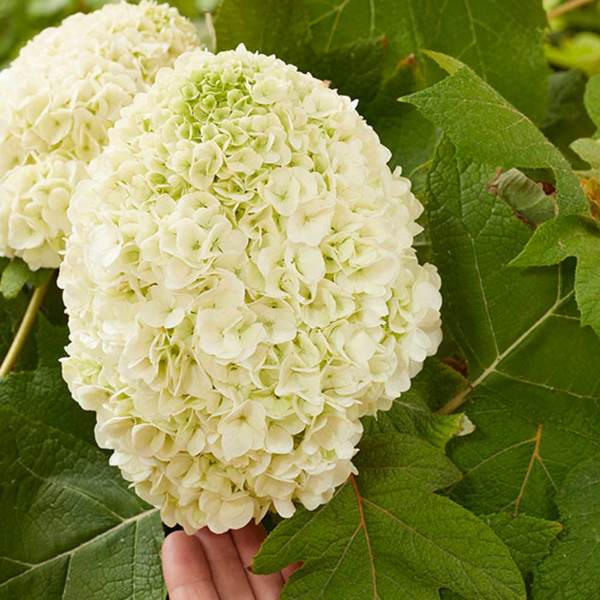
This makes it an excellent cut flower as well. It can grow well in full sun to partial shade conditions and can grow up to six feet tall and wide. Its green-shaped leaves will turn a beautiful red during the fall.
6. Gatsby Pink
As the name already signifies, this variety produces white flowers that fade to a beautiful pastel pink. It thrives in full sun and partial sun conditions. Being a medium-sized variety, it can reach a height and spread of six to eight feet.
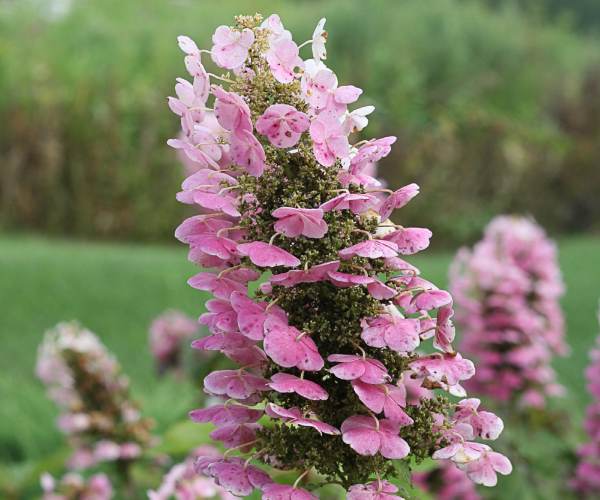
The beautiful dark leaves will turn mahogany red in the fall. This also has salt tolerance, making it a great choice for coastal plantings. It does extremely well in consistently moist, well-drained soils that are found along the coast.
7. Panicle Varieties
Panicle hydrangeas, also known as Hydrangea paniculata are also called PeeGee. These plants have great hardiness and drought tolerance. They can equally survive humid summers and cold winters. Their oversized blooms are the low-maintenance version of the bigleaf varieties. These plants tolerate a wide range of soil conditions.
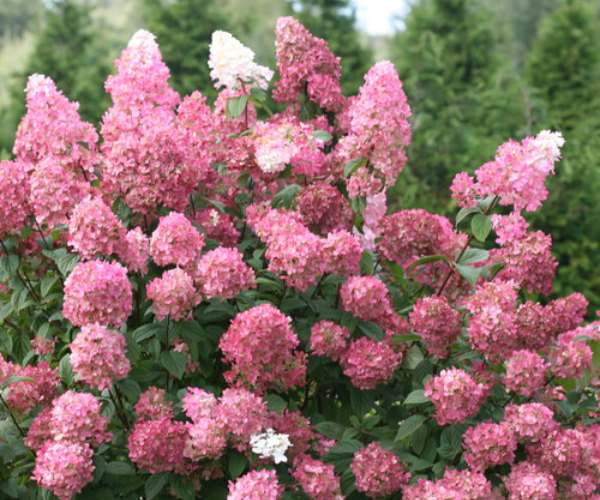
They do well in both full sun to partial shade conditions. However, most will bloom better in full sun. Unlike oakleaf varieties, these will bloom on new wood. It means they benefit from a heavy prune at the end of the growing season. It will encourage even more new growth the following spring.
8. White Wedding
The White Wedding varieties produce rounded clusters of beautiful white flowers and enjoy a full sun environment to put out the most blooms. If you give it full sun and the required amount of water, it will gift you a ton of cut flowers for your arrangements.
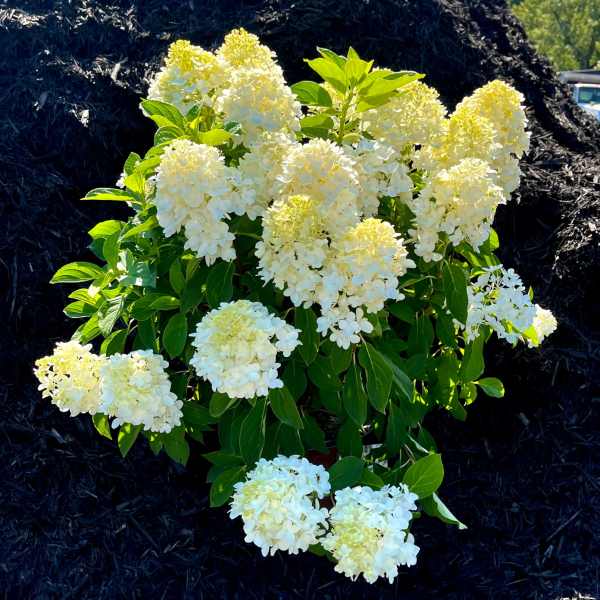
It grows up to three to five feet tall and wide. While pruning is not that necessary, deadheading spent blooms will provide more flowers.
9. Moon Dance
If you’re looking for a show-stopper in your garden, this is it. The Moon Dance produces conical clusters of white flowers. This can grow very large and will catch everybody’s eye. It can grow up to six to eight feet tall and four feet wide.
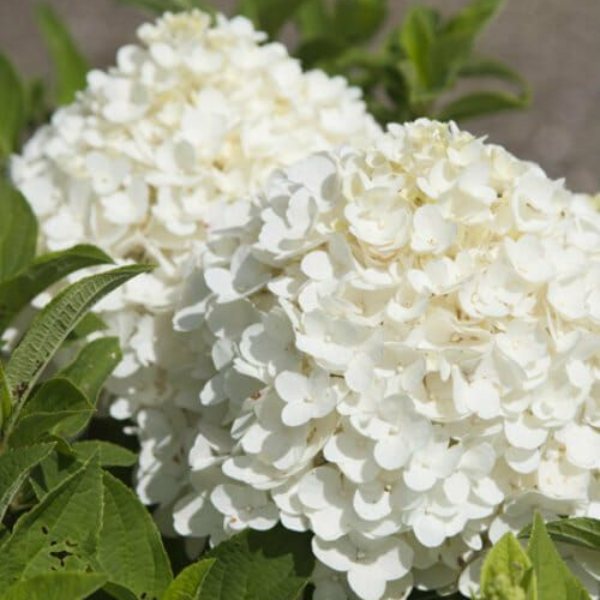
You have to be mindful of its full size while choosing a planting site. It does well in both full sun and partial sun conditions.
10. Strawberry Shake
This pretty variety is a perfect match for a huge container or planter with a smaller mature size of four to five feet tall and wide. It grows fats so you have to plant it in a pot that is big enough for its mature size.
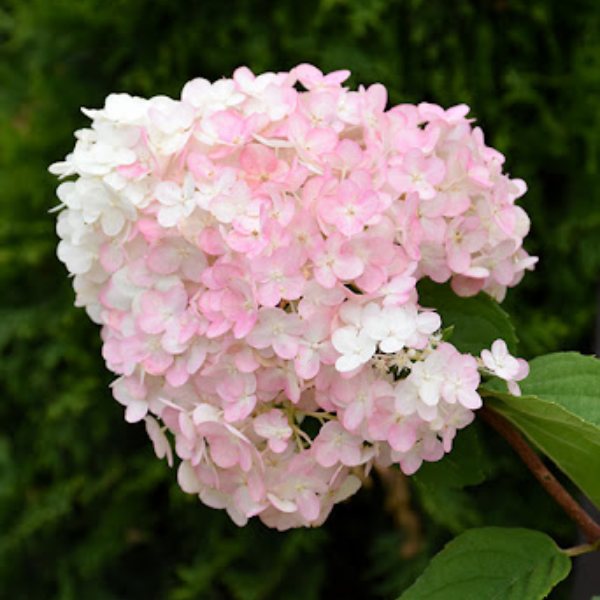
Also, be prepared to repot it quickly. The flower blooms white and it eventually fades to a light pink at the end of the season.
11. Candy Apple
Candy Apple produces light green flowers that turn to pure white. As temperatures go down in the fall, the flowers will get a red-rosy hue, giving them a candy apple appearance and that is where it got its name from.
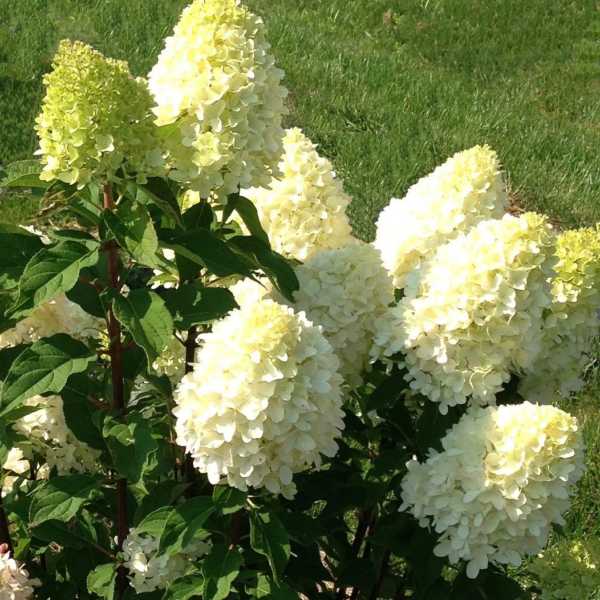
Their long-lasting blooms and sturdy stems are perfect for cut flower arrangements and can be used fresh or dried. These compact plants have a mature size of four to five feet tall and wide.
12. Little Lime
As its name mentions, Little Lime produces pale green or yellow flowers that turn white and then pink as the growing season continues. It has a sturdy stem making it a great cut flower.
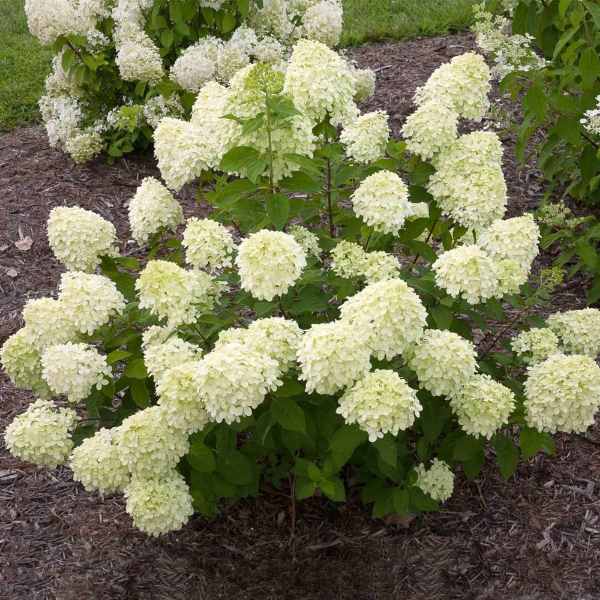
This variety is also on the smaller side with a mature size of three to five feet tall and wide.
13. Smooth Hydrangeas
Smooth Hydrangeas also known as Hydrangea arborescens are native to the Southern US. They give large rounded, flower heads. These varieties love partial conditions to produce the best blooms. Unlike other varieties, they need constant moisture and are less drought-tolerance.
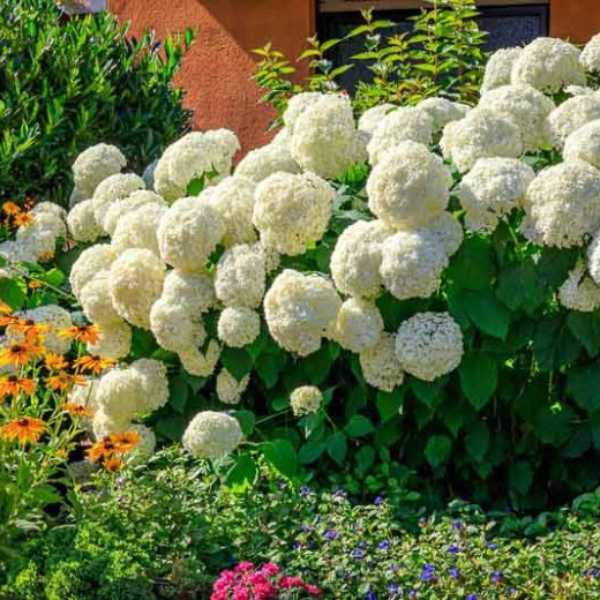
Same as the panicle varieties, smooth hydrangeas bloom on new wood. These beginner-friendly are fast-growing plants and also contain dwarf varieties that are perfect for growing in pots if you don’t have a garden.
Some FAQs related to hydrangeas
Q. How do I get my hydrangea to bloom endlessly?
A. Hydrangeas prefer moist but not wet soil and one application of fertilizer in spring or summer. It can treat you with a great number of flowers.
Q. Why do my hydrangeas have brown dry spots on the leaves?
A. If the spot is round and brown with a red to purple ring, you likely have Anthracnose. Remove the affected leaves and treat them with a fungicide.
The margins of the leaves fading from green to grey to brown means the leaves were dry for too long.
Q. What types of fertilizers should I use?
A. We recommend a granular, slow-release fertilizer with an NPK ratio of 10-30-10.
